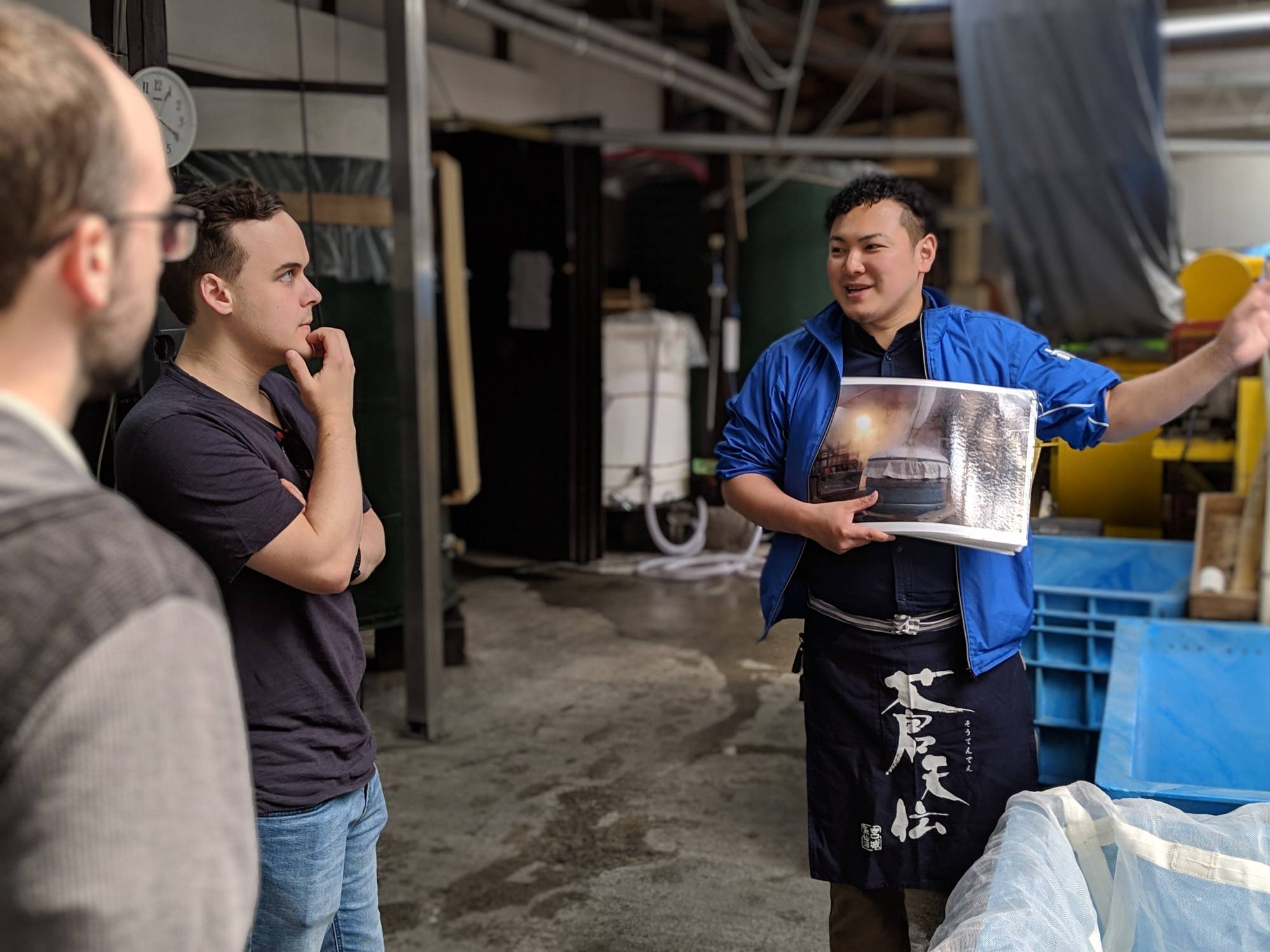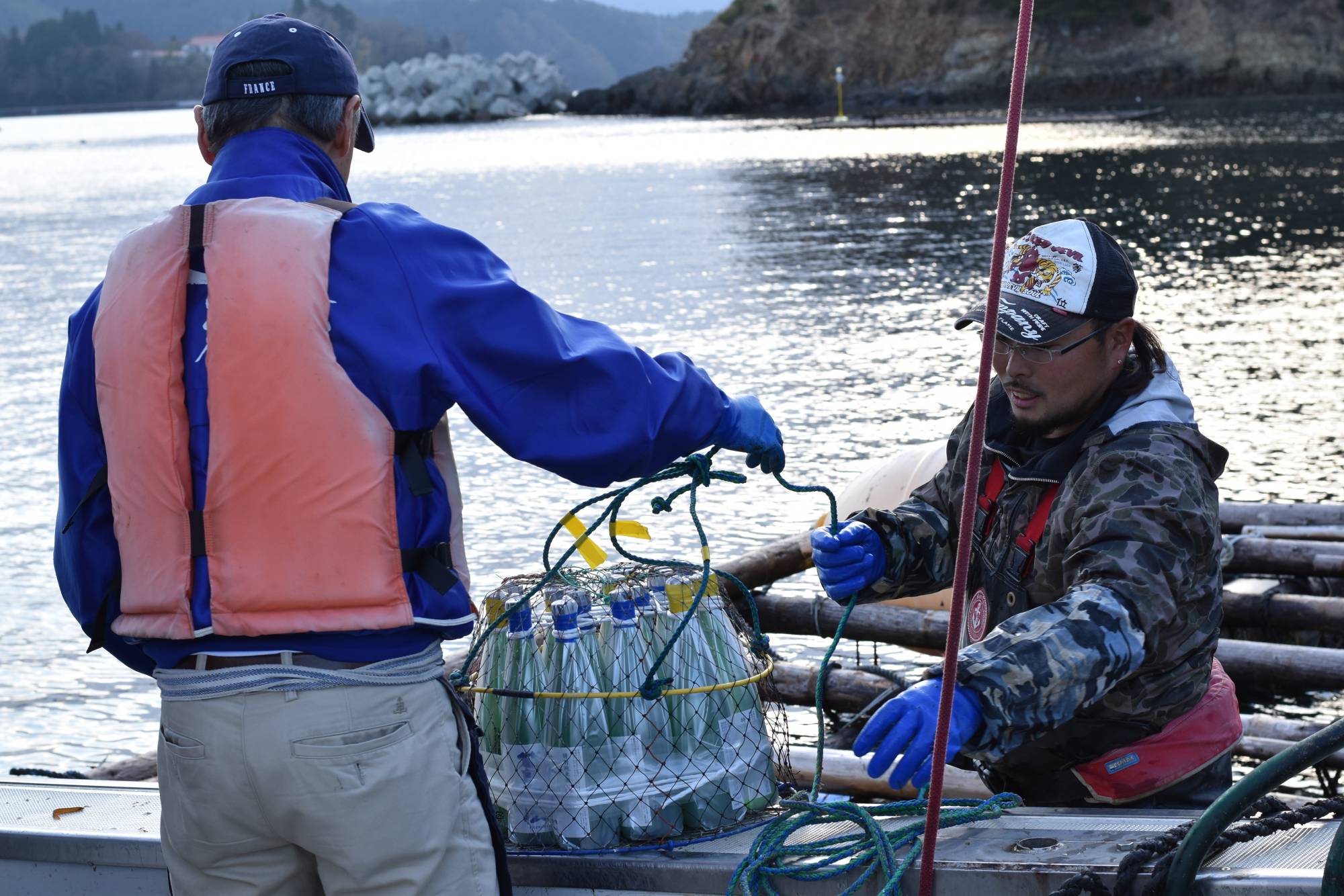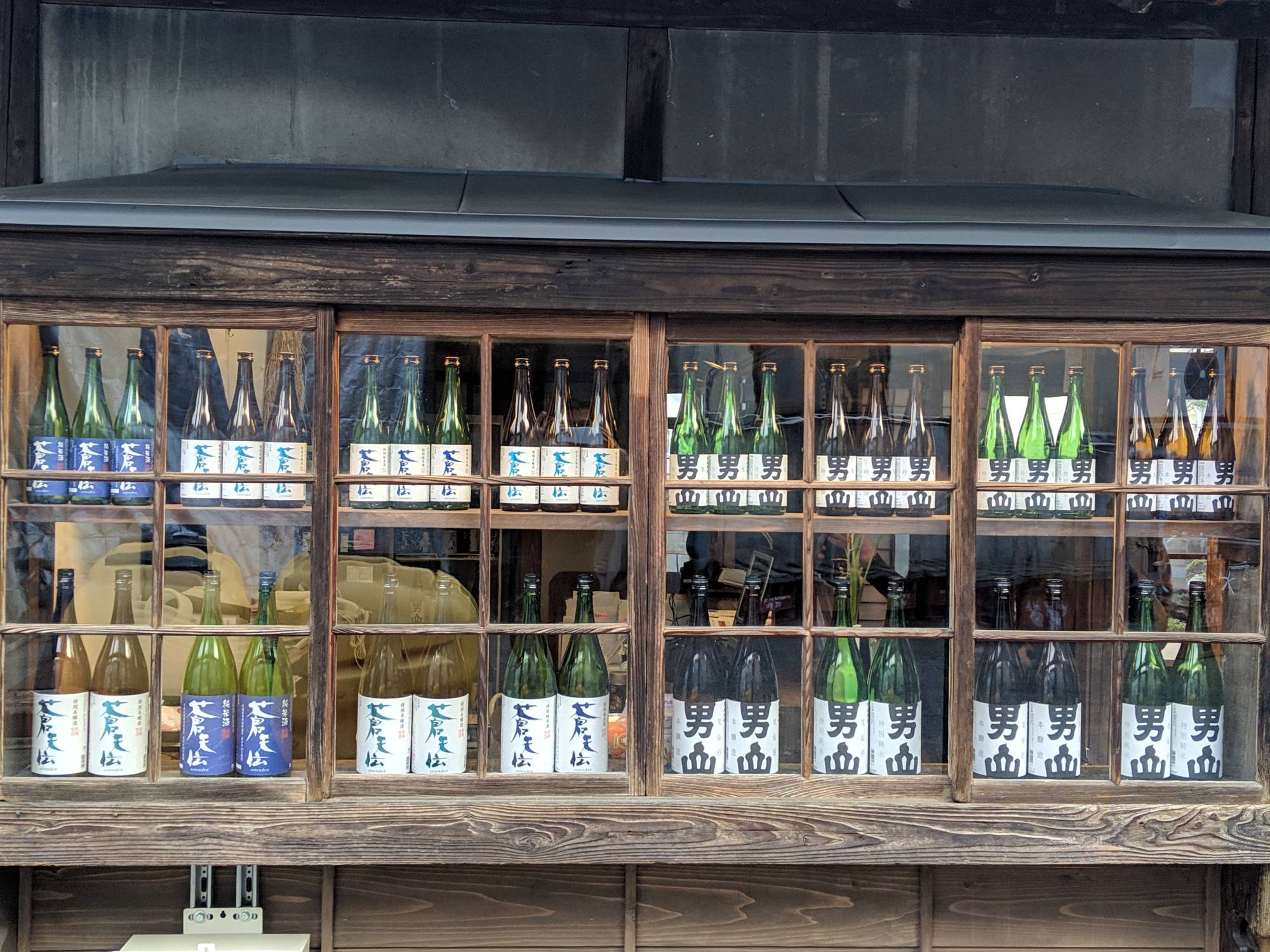Kesennuma, Miyagi Pref. – Fifteen years ago, Akihiko Sugawara began dreaming of sunken treasure. The fourth-generation president of Otokoyama Honten sake brewery in the town of Kesennuma, Miyagi Prefecture, he was captivated by tales of ancient wine bottles discovered in shipwrecked boats.
“I’d also heard that wineries were aging wine underwater, and that the results were fantastic,” he recalls.
Soon, Sugawara started to contemplate whether sake could also be matured under the sea. He already knew of cave-aged sake in Tochigi Prefecture, and of bottles being stored in yukimuro — warehouses kept cool with packed snow — in northern regions such as Niigata Prefecture. How, he wondered, might the gentle currents in the cold, crystalline waters off the coast of Kesennuma affect the development of the company’s elegant Sotenden lineup of brews?
There was only one way to find out.

In 2006, Sugawara submerged 16 bottles of sake in the Karakuwa Bay at depths of 10 and 15 meters. Bundled in nets and tied to the beams of an oyster farm bed, the bottles were retrieved after a year and then tasted.
“We did it for fun as an experiment, but were surprised at how the sake’s flavor changed,” Sugawara says.
The marine sake attracted so much attention that the brewery decided to make the underwater storage experience a permanent feature of its Sake in the Sea voyage. The experience begins with a tour of the Otokoyama Honten brewery. Each guest writes a message that is then attached to a bottle and sealed in watertight packaging. The expedition continues aboard a fishing boat that sails from an oyster farm to retrieve the previous year’s cache of sake and deposit the new batch. Once back ashore, the journey culminates in a sake-and-seafood feast, complete with freshly shucked oysters and a tasting of the sea-aged sake alongside Otokoyama Honten’s other offerings.
Since 2007, the brewery has hosted the tour intermittently. The program was temporarily suspended after the 2011 Tohoku earthquake triple disaster, which devastated Kesennuma and destroyed Otokoyama Honten’s historic office building. In the years following the calamity, the company has been instrumental in helping to rebuild the city, leading redevelopment projects and investing in new ventures such as craft beer maker Black Tide Brewing. Otokoyama Honten resumed offering the marine sake experience on an intermittent basis from 2012.



In 2019, the expedition won a bronze medal in the Eat! Meet! Japan competition, a food-themed tourism support project sponsored by the country’s Ministry of Agriculture, Forestry and Fisheries (MAFF).
Now in its third year, the project aims to appeal to non-Japanese visitors by providing information in English and marketing assistance to tour operators. The focus, says a representative from MAFF’s food culture division, is to highlight culinary experiences in rural areas, and many of the featured regions have seen increased interest from international tourists.
This year, Otokoyama Honten is offering the Sake in the Sea tour through bookings on demand via ByFood, a platform for Japanese food experiences.
Heading to Kesennuma to taste the fabled marine sake myself, I accompany Sugawara’s son, Hiroki, on a boat from the nearby town of Karakuwa. When we arrive at the designated spot, Masaya Hatakeyama, the barrel-chested, fifth-generation fisherman that runs Tobahira Oyster Farm, slowly reels in the haul, which emerges at the end of a 15-meter rope looking like a hoary sea monster. After 18 months underwater, the cage containing the bottles is covered with strands of purple algae and dotted with tiny orange hoya (sea pineapples).



Back at the oyster farm, we sample a version of the brew — Sotenden Tokubetsu Junmai — that had been stored in a typical refrigerator for a year and a half, before tasting the sea-aged sake. The flavor of the conventionally matured brew is clean and round, with sweetness on the attack that gives way to well-structured acidity. The marine sake, however, has a noticeably darker and earthier character, with caramelized notes of maple sugar and toasted almond.
When asked what accounts for the pronounced difference, Hiroki surmises that it’s due to a combination of the ocean waves and indirect sunlight — or maybe just the magic of the sea.
For more information about Sake in the Sea, visit bit.ly/sakeinthesea-jp.
In line with COVID-19 guidelines, the government is strongly requesting that residents and visitors exercise caution if they choose to visit bars, restaurants, music venues and other public spaces.
In a time of both misinformation and too much information, quality journalism is more crucial than ever.
By subscribing, you can help us get the story right.
SUBSCRIBE NOW


